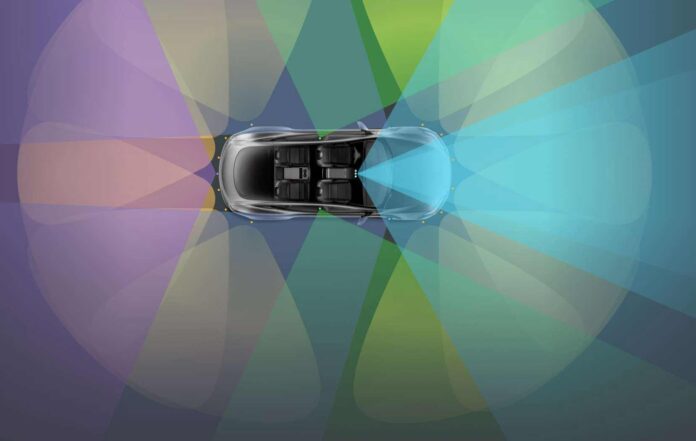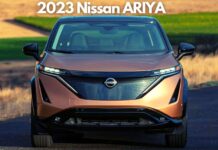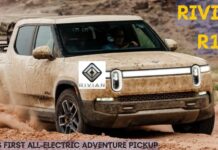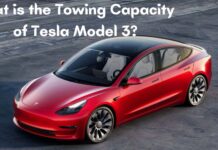IS SELf driving car tesla autopilot Technolgy safe?
Tesla is the popular electric car manufacturer in the world and is known for its innovative Autopilot features. The future of driving is enhanced by the introduction of self-driving vehicles by the Tesla company.
The Tesla standard electric cars are equipped with advanced hardware capable of offering Autopilot features, and full self-driving capabilities. The company provides regular software updates to optimize the functionality and performance of the Autopilot system.
Tesla’s Autopilot technology comes with various features including advanced sensor coverage, powerful processing, Tesla Vision, Autopilot navigation, Autosteer+, Smart Summon, and various other safety features like Automatic Emergency Braking, Side Collision Warning, Front Collision Warning, Auto High Beams, and much more.
Besides, the autopilot technology uses various cameras to acquire visual display of the front section, and long-range detection of distant objects.
Tesla’s Autopilot AI team is responsible for the future enhancement of the autonomy of current and new generations of vehicles.
Now, let’s explore the features in a detailed manner…
Advanced Sensor Coverage
The Tesla’s advanced sensor coverage is assisted by eight surround cameras that offer 360 degrees view around the car at up to a range of 250 meters. In addition, the 360 vision is enhanced by the twelve updated ultrasonic sensors that allow detection of both hard and soft objects at nearly twice the distance of the prior system.

Camera Details
| Camera Position | Range |
| Rearward Looking Side Cameras | Max distance 100m |
| Wide Forward Camera | Max distance 60m |
| Main Forward Camera | Max distance 150m |
| Narrow Forward Camera | Max distance 250m |
| Rear View Camera | Max distance 50m |
| Ultrasonics | Max distance 8m |
| Forward-Looking Side Cameras | Max distance 80m |
Cameras installed behind the windshield

There are three cameras installed behind the windshield that displays broad visibility in front of the car and focused, long-range detection of distant objects. The 3 cameras are wide, main, and narrow.
The wide camera setup comes with a 120-degree fisheye lens that captures traffic lights, obstacles in the path of travel, and objects at close range. This camera is useful during low-speed maneuvering, especially during urban driving.
The main camera setup is installed to cover a broad spectrum of use cases whereas the narrow camera offers a focused, long-range view of distant features useful during high-speed operation.
Forward-Looking Side Cameras

The forward-looking side cameras are known as 90 degrees redundant forward-looking side cameras that scan for other vehicles unexpectedly entering your lane on the highway. With this capability, the cameras offer additional safety when entering intersections with limited visibility.
Rearward Looking Side Cameras

The rearward-looking side cameras are responsible for monitoring rear blind spots on both sides of the car. This feature of the side cameras is vital for safety purposes while changing lanes and merging into traffic.
Rear View Camera

The Rear-View Camera is always beneficial during rear operations like reversing, complex parking maneuvers, and many other difficult driving operations. The Autopilot hardware suite of the Tesla cars is supported by the rear-view camera that offers clear rear vision with enhanced optics.
Ultrasonic Sensors

The ultrasonic sensors equipped in the Tesla cars detect nearby vehicles when they interrupt your lane and provides assistance during parking. You can double the range with enhanced sensitivity using uniquely coded signals of such sensors.
40X optimized processing power
Tesla’s onboard computer system comprises of Hardware 3 technology that processes more than 40 times the data compared to Tesla’s previous-generation system. This computer system is powered by a Tesla-developed neural net which is the foundation of the training and development of Tesla’s Autopilot system.
The Tesla Autopilot system with Hardware 3 onboard computer offers a view of the world that a driver alone cannot access. The view of every direction can be visible simultaneously, and the wavelengths can be accessed far beyond the human senses.
Tesla Vision

The Tesla car models are featured with a powerful set of Tesla-developed vision processing systems built on a deep neural network to enhance and optimize the performance of a camera suite. The Tesla Vision deconstructs the car’s surrounding at greater levels of reliability than those achievable with classical vision processing strategies.
Features of the Autopilot System
Tesla’s Autopilot system has been introduced to assist drivers with the most challenging, and burdensome parts of driving. The system comes with advanced safety and convenience features.
The company updates the Autopilot system regularly to introduce new features, and enhance existing functionality to make the Tesla car safer and more capable over time. Your Tesla car can steer, accelerate, and apply brake automatically within its lane with the innovative autopilot system.
However, driver supervision is required in the current autopilot features so, it doesn’t make the car autonomous.
Navigation on Autopilot mode

The navigate on autopilot feature allows your car to change lanes to optimize your route, and make adjustments so that, you don’t get interrupted behind by slow vehicles. This Navigate on Autopilot system can automatically steer your car toward highway interchanges and exits depending upon your destination.
Autosteer+

The Autosteer+ feature on the Tesla cars allows tighter navigation in complex roads using advanced cameras, sensors, and computing power.
Smart Summon

The Smart Summon feature allows the self driving car Tesla to navigate comfortably in complex environments, and parking spaces. It also assists in maneuvering around objects as necessary to come to find you in a parking lot.
Full Self-Driving Capability
The all-new Tesla Cars are equipped with the required hardware for full self-driving in varying driving circumstances. The full self-driving capability is designed and introduced to operate short and long-distance trips with no action required by the driver.
What can your Tesla do from Home?

The Self Driving Car Tesla Autopilot feature allows you to easily delegate your car as all you need to do is get inside the car and tell it where to go. An interesting feature here is that the car will look at your calendar and take you there as the assumed destination if you don’t say or command anything to your automated Tesla car.
Your Tesla will calculate the route, figure out the optimal route, navigate urban streets, difficult intersections, and freeways to take you to the destination.
What can your Tesla do in your final destination?

As you arrive at your destination, your car will enter park seek mode as soon as you step out at the entrance. The car automatically searches for a favorable parking spot and parks itself. And it is even easier to get back your Tesla from the parking spot because it comes to your automatically with a single tap on your phone. Isn’t it a cool feature?
Standard Safety Features
Safety is the utmost priority for every vehicle and it is strictly mandatory for vehicles with an Autopilot system. There is a higher probability of accidents and incidents with cars equipped with self-driving capabilities. So, manufacturing companies must ensure optimum safety before selling it to customers.
Without the implementation of standard safety features, self-driving cars can’t acquire a green signal from the governing authority. Having said that, we need to know the safety features available in Tesla cars that come with the Autopilot system.
The all-new Tesla Car models are equipped with various safety features like Automatic Emergency Braking, Side Collision Warning, Front Collision Warning, and Auto High Beams.
The Automatic Emergency Braking is introduced to detect objects that the car may impact and applies brakes accordingly to mitigate accidents.
The Side Collision Warning system provides awareness to the driver of any potential collisions with hurdles alongside the car.
Likewise, the Front Collision Warning system detects possible collisions with slower-moving or stationary cars.
The Auto High Beams are responsible for adjusting high and low beams in accordance with the incoming traffic. The driver need not worry about changing low and high beams with this feature.
Tesla Autopilot System Safety Report
Tesla is one of the car manufacturers company that emphasizes primarily advanced safety features due to which the Tesla cars are engineered to be the safest cars in the world. The company builds its electric cars with a unique combination of passive safety, active safety, and automated driver assistance.
Tesla Model 3, Model X, and Model S are known to have achieved the lowest overall probability of injury of any vehicle ever tested by the New Car Assessment Program introduced by the U.S. government. The Tesla cars offer exceptional strength, large crumple zones, and a uniquely low center of gravity with their rigid and fortified structure.
It is analyzed that the Tesla battery packs rarely incur serious damages during accidents and incidents due to the optimum build strength.
There is always a chance for accidents and incidents irrespective of the advanced safety features introduced. So, there have been accidents with Tesla cars also. Below are the quarterly accident report of Tesla cars in the years 2020 and 2022.
2021 Report
Q1 REPORT 2021
In the 1st quarter, Tesla company registered one accident for every 4.19 million miles driven in which drivers had Autopilot system engaged. For those driving without Autopilot but with Tesla’s active safety features, the company witnessed one accident for every 2.05 million miles driven. For those driving without Autopilot and without Tesla’s active safety features, one accident was registered for every 978 thousand miles driven. By comparison, NHTSA’s most recent data shows that in the United States there is an automobile crash every 484,000 miles.
2020 Report
Q4 REPORT 2020
In the 4th quarter, Tesla registered one accident for every 3.45 million miles driven in which drivers had Autopilot engaged. For those driving without Autopilot but with Tesla’s active safety features, one accident was registered for every 2.05 million miles driven. For those driving without Autopilot and without Tesla’s active safety features, only one accident was registered for every 1.27 million miles driven. By comparison, NHTSA’s most recent data shows that in the United States there is an automobile crash every 484,000 miles.
Q3 REPORT 2020
In the 3rd quarter, Tesla registered just one accident for every 4.59 million miles driven in which drivers had Autopilot engaged. For those driving without Autopilot but with Tesla’s active safety features, one accident was registered for every 2.42 million miles driven. For those driving without Autopilot and without Tesla’s active safety features, one accident was registered for every 1.79 million miles driven. By comparison, NHTSA’s most recent data shows that in the United States there is an automobile crash every 479,000 miles.
Q2 REPORT 2020
Tesla registered one accident for every 4.53 million miles driven in which drivers had Autopilot engaged in the 2nd quarter. For those driving without Autopilot but with Tesla’s active safety features, one accident was registered for every 2.27 million miles driven. For those driving without Autopilot and without Tesla’s active safety features, the company registered one accident for every 1.56 million miles driven. By comparison, NHTSA’s most recent data shows that in the United States there is an automobile crash every 479,000 miles.
Q1 REPORT 2020
In the 1st quarter, Tesla company registered one accident for every 4.68 million miles driven in which drivers had Autopilot system engaged. For those driving without Autopilot but with Tesla’s active safety features, only one accident was registered for every 1.99 million miles driven. For those driving without Autopilot and without Tesla’s active safety features, the company registered one accident for every 1.42 million miles driven. By comparison, NHTSA’s most recent data shows that in the United States there is an automobile crash every 479,000 miles.
Conclusion on Self Driving Car Tesla Technology
Self driving car Tesla are the cars of the future that are introduced with intelligent and innovative technological features. The Autopilot system is always challenging as it is difficult to implement and can create more complications. Besides, it requires approval from concerned authorities and jurisdictions.
Safety is the main aspect to consider while introducing self-driving cars in the automobile market. Tesla has effectively tested its autopilot system to ensure its customers with advanced automated technology and standard safety.
Tesla keeps on continuously upgrading the Autopilot system software to enhance and optimize self-driving capabilities.
Some Frequently Asked Questions
Do Tesla cars drive themselves?
Tesla Cars are equipped with intelligent and innovative Autopilot technology with the required hardware system. With that, the Tesla cars are introduced with self-driving capability.
Do Tesla cars have autopilot?
All new Tesla cars come standard with advanced hardware capable of providing Autopilot features today, and full self-driving capabilities in the future—through software updates designed to improve functionality over time.
What is the cheapest self-driving Tesla?
The Tesla Model 3 can be taken as the cheapest self-driving Tesla model whose price starts at $39,490.
What does Tesla autopilot include?
The Tesla autopilot system includes various cameras, sensors, computer hardware, processor, and other smart technologies.




